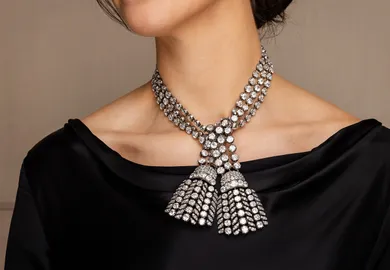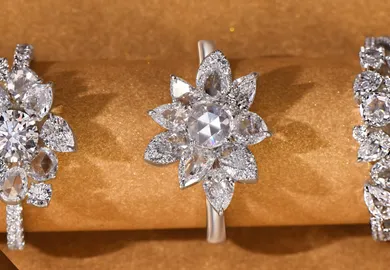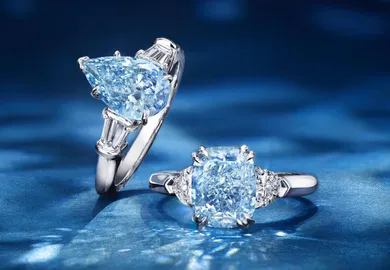
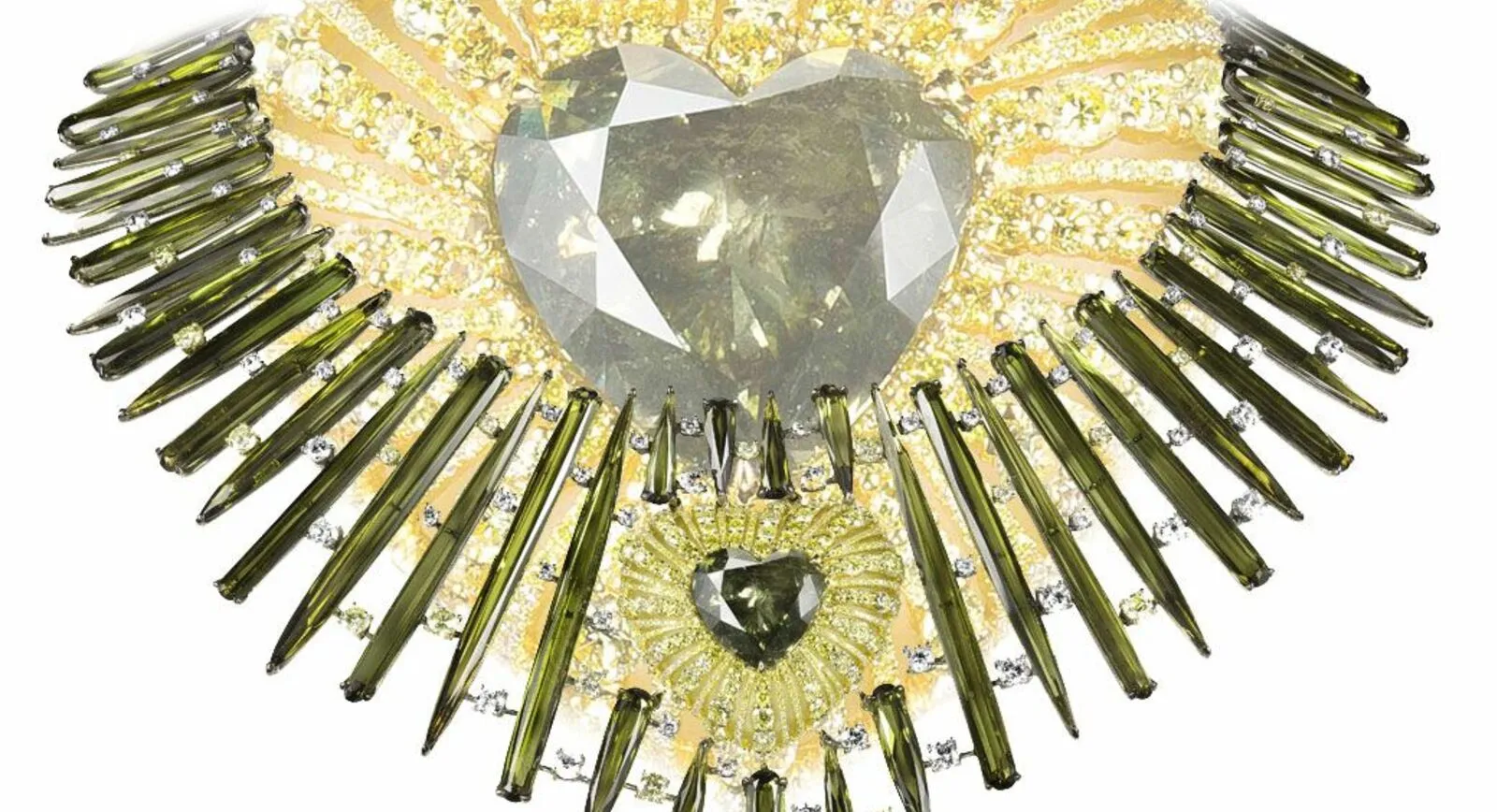
The Chameleon Diamond: A Mystery of Nature
What is a chameleon diamond? Many people have never heard of it, let alone held one in their hands, such is its rarity. However, if you were to ask a collector, gemmologist or a trader of precious stones, they would all tell you that the chameleon diamond got its name owing to its unique trait of changing colour in hot conditions or when kept for a prolonged period in a dark place.
So what does this exotic stone look like? If it has not been exposed to anything or been processed at all, then its colour is usually olive or a grey yellowish green. When heated to 120-150 degrees, the olive tint of the diamond, within a matter of seconds, turns into a rich cinnamon or, in some cases, an orangey yellow.
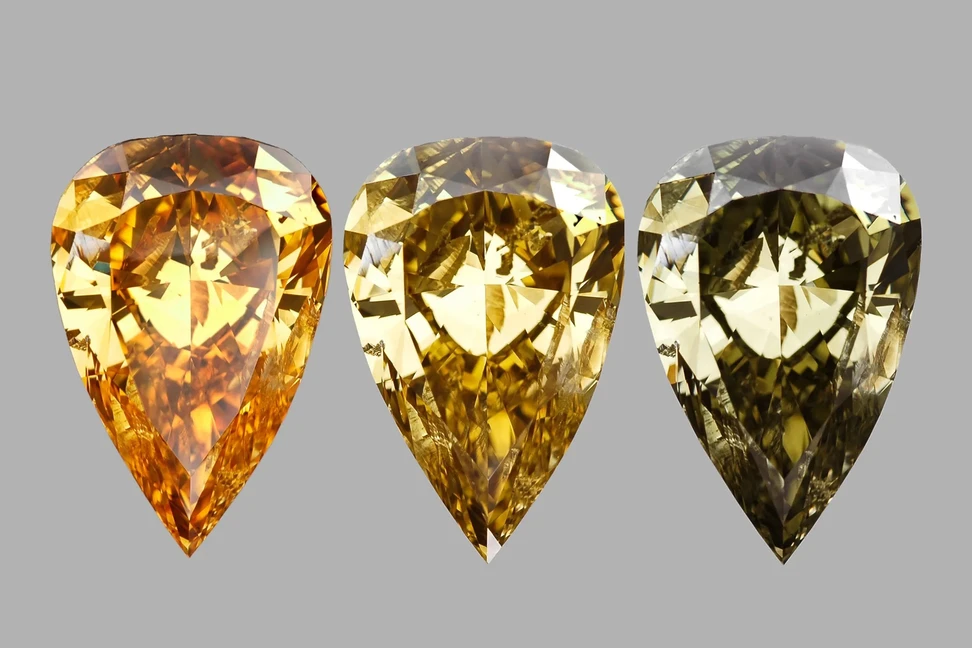
Natural Fancy Chameleon Diamonds
The change of colour is visible to the naked eye, but practice has shown that this unusual characteristic is short-lived. This is especially the case if a chameleon diamond that has changed colour because of its storage in the dark: within 10 minutes it regains its usual olive tint. Incidentally, not all these diamonds change colour from a dark hue to a light one. The so-called ‘reverse shift’ also exists, from yellow to olive. These stones are even rarer. Amongst other green diamonds, it sometimes hides this unusual quality, masquerading as an ordinary green diamond.
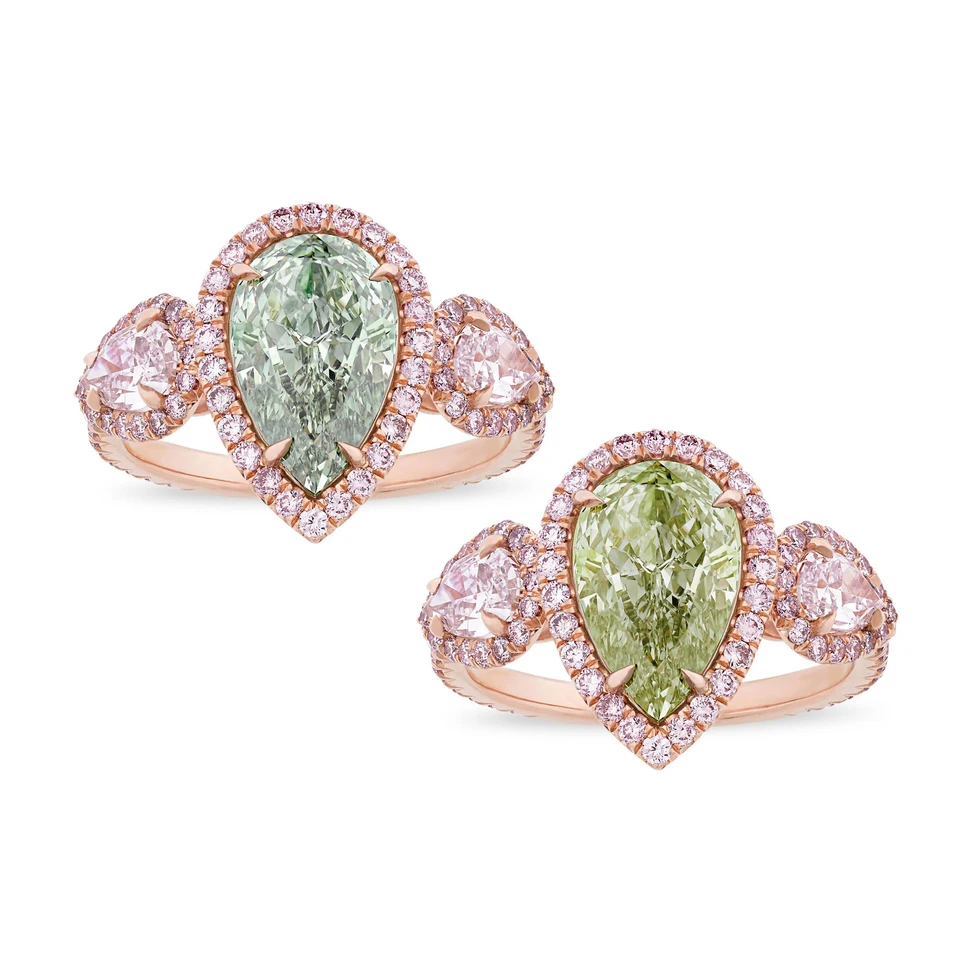
Chameleon Diamond Ring, 2.14ct
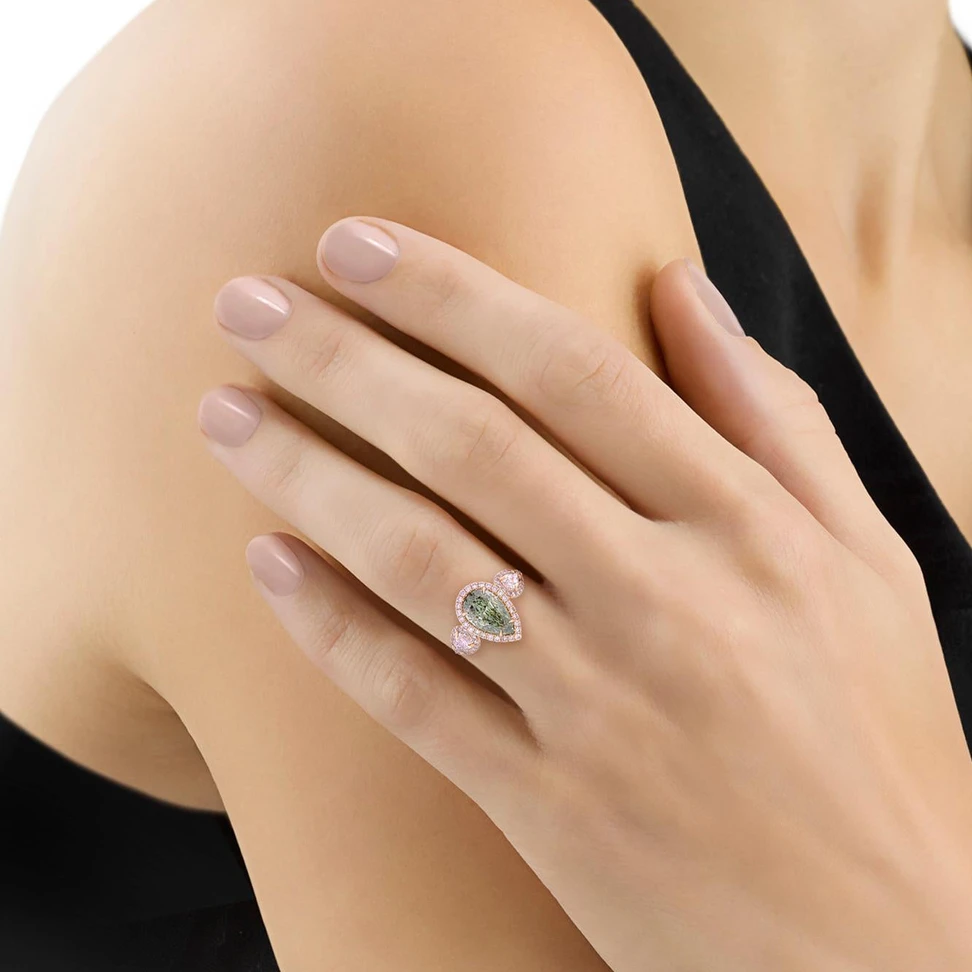
Chameleon Diamond Ring, 2.14ct
Until 1943, when the first chameleon diamond was recorded at the Gemological Institute of America (GIA), jewellers and diamond traders could have taken these “chameleons” to be mere green diamonds. In order to determine accurately whether a diamond can change colour, a laboratory experiment is required. This can be done at the GIA, where the approach to testing green diamonds is especially meticulous (if a tested green diamond is not a chameleon then, under a heat that exceeds 140 degrees, its hue can be changed permanently).
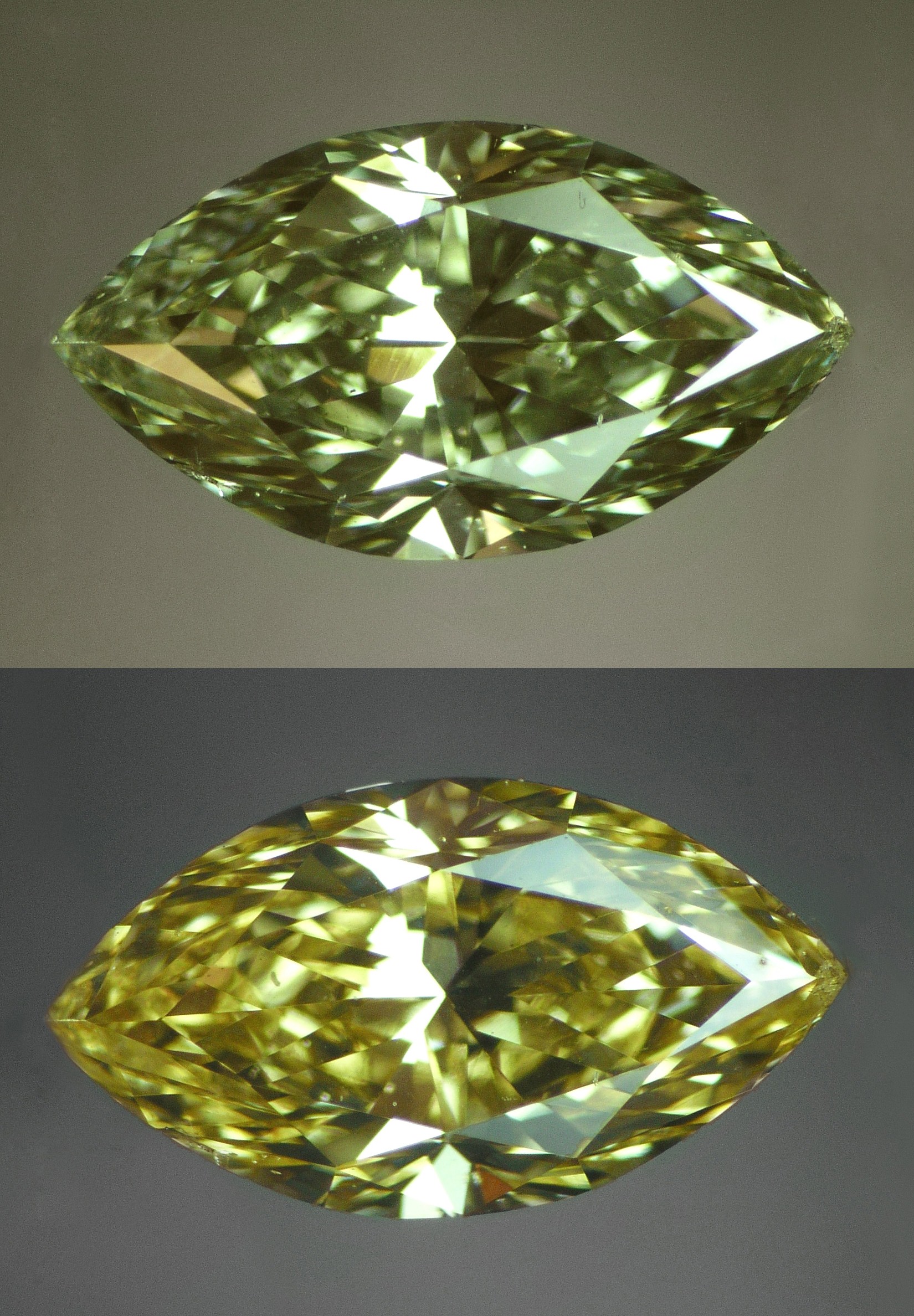
The Chameleon Diamond – A Mystery of Nature
No one has managed to explain the colour change phenomenon yet. Even the specialists at the GIA, who have run multiple simultaneous tests on 39 chameleon diamonds (the report is available on GIA website), cannot reach a unanimous opinion: some think the change of colour is due a hydrogen impurity in the stone’s chemical composition; others believe that it has luminescent and phosphorescent properties. Of course, anything that cannot be explained is the subject of significant interest. That is why the specialists are continuing their investigative work in the hope of solving this mystery of nature.
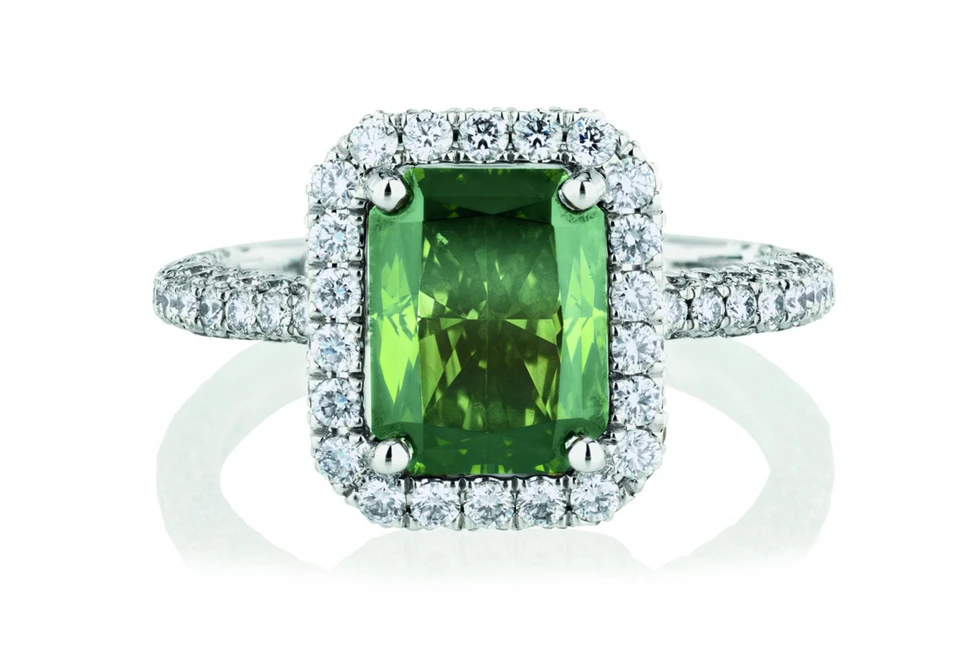
De Beers Chameleon Diamond Ring
You are probably already wondering what this “two-faced” stone can cost. Like all rare diamonds, the essential factor that determines price is size, as well as the tone and depth of colour. The trouble is chameleon diamonds are so rare that to value them properly is quite difficult. Sales at auction currently serve as the best indication of their value. For instance, in November 2011 a chameleon diamond ring (8.8 carats) was sold by Christie’s in Hong Kong for $590,000.

Chopard Chameleon Diamond Ring
The spectacular 13,60 cts heart-shaped chameleon diamond necklace above is by BOGH-ART. The 31.32 carat oval-cut diamond ring is by Chopard and it featured the largest documented stone in this category – Chopard www.chopard.com. The 2.23 cts emerald cut chameleon diamond ring is by De Beers. The colour change image is a courtesy of Thomas Hainschwang.

WORDS
Katerina Perez is a jewellery insider, journalist and brand consultant with more than 15 years’ experience in the jewellery sector. Paris-based, Katerina has worked as a freelance journalist and content editor since 2011, writing articles for international publications. To share her jewellery knowledge and expertise, Katerina founded this website and launched her @katerina_perez Instagram in 2013.




